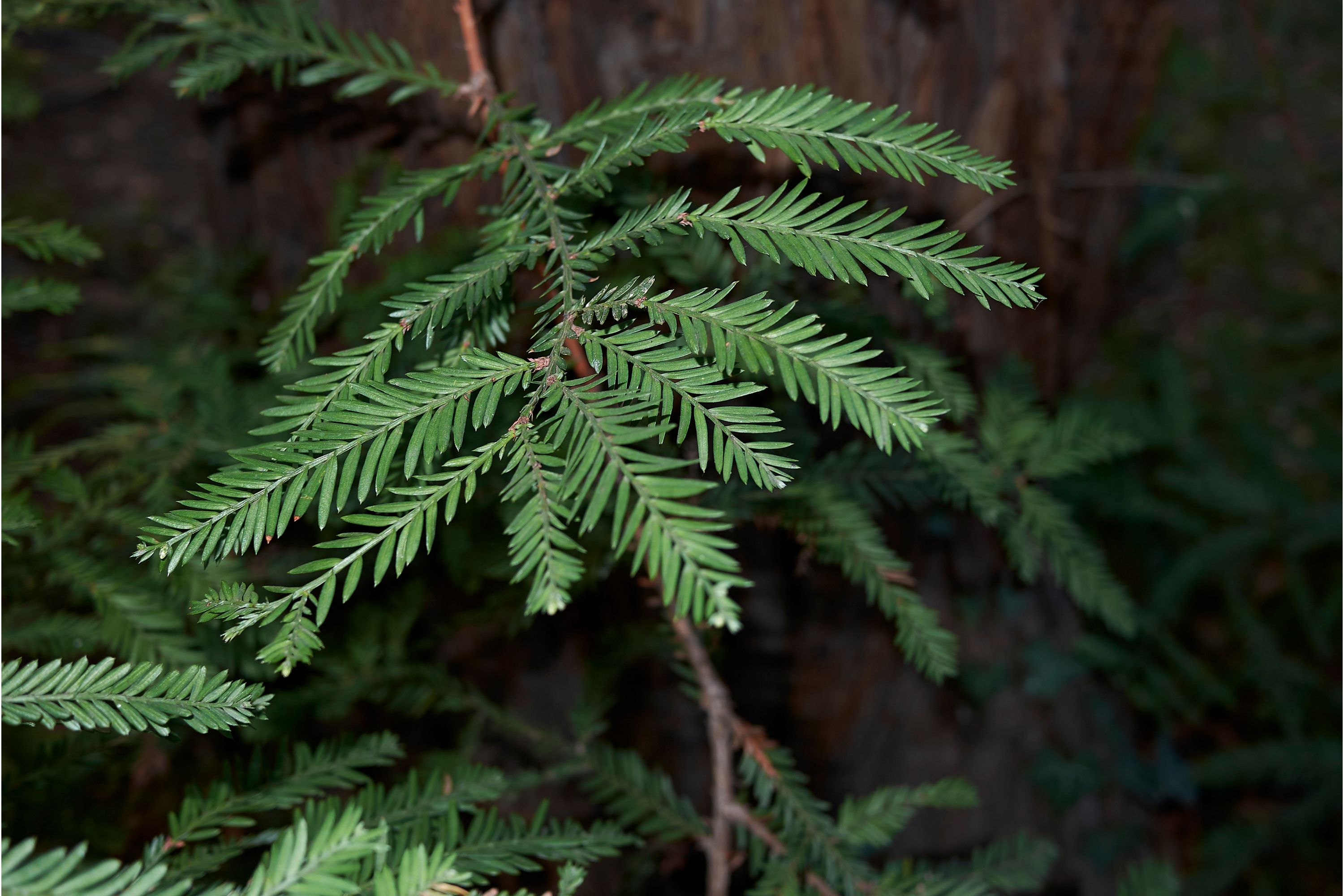"Coast redwood "
(Sequoia sempervirens)

Description
Sequoia sempervirens is the sole living species of the genus Sequoia in the cypress family Cupressaceae (formerly treated in Taxodiaceae). Common names include coast redwood, coastal redwood, and California redwood. It is an evergreen, long-lived, monoecious tree living 1,200–2,200 years or more. This species includes the tallest living trees on Earth, reaching up to 115.5 meters (379 ft) in height (without the roots) and up to 8.9 m (29 ft) in diameter at breast height. These trees are also among the oldest living things on Earth. Before commercial logging and clearing began by the 1850s, this massive tree occurred naturally in an estimated 810,000 hectares (2,000,000 acres) along much of coastal California (excluding southern California where rainfall is not sufficient) and the southwestern corner of coastal Oregon within the United States. The coast redwood is known to have reached 115 meters (377 ft) tall with a trunk diameter of 9 m (30 ft). It has a conical crown, with horizontal to slightly drooping branches. The bark can be very thick, up to 30-centimeter (1 ft), and quite soft and fibrous, with a bright red-brown color when freshly exposed (hence the name redwood), weathering darker. The root system is composed of shallow, wide-spreading lateral roots. The leaves are variable, being 15–25 millimeters (5⁄8–1 in) long and flat on young trees and shaded lower branches in older trees. The leaves are scale-like, 5–10 mm (1⁄4–3⁄8 in) long on shoots in full sun in the upper crown of older trees, with a full range of transition between the two extremes. They are dark green above and have two blue-white stomatal bands below. Leaf arrangement is spiral, but the larger shade leaves are twisted at the base to lie in a flat plane for maximum light capture. The species is monoecious, with pollen and seed cones on the same plant. The seed cones are ovoid, 15–32 mm (9⁄16–1+1⁄4 in) long, with 15–25 spirally arranged scales; pollination is in late winter with maturation about 8–9 months after. Each cone scale bears three to seven seeds, each seed 3–4 mm (1⁄8–3⁄16 in) long and 0.5 mm (1⁄32 in) broad, with two wings 1 mm (1⁄16 in) wide. The seeds are released when the cone scales dry out and open at maturity. The pollen cones are ovular and 4–6 mm (3⁄16–1⁄4 in) long.
Taxonomic tree:







